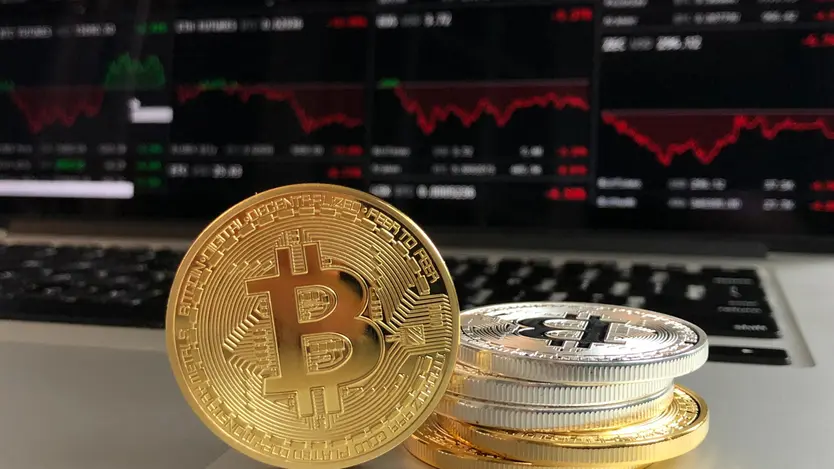Read our crypto trading guide on how to find the exchange that’s right for you – plus common mistakes to avoid when buying and selling coins

If you’re hoping to start crypto trading, it can be difficult to know where to start. There are more than 13,500 cryptocurrencies in circulation, according to CoinMarketCap – and countless platforms where they can be bought and sold. Finding impartial, authoritative commentary on market movements can also be a challenge. While crypto advocates are constantly upbeat about the industry’s potential, sceptics are often too dismissive about what’s ahead. Here, we’ll cut through the noise with our no-nonsense crypto trading guide.
Crypto trading for beginners
Let’s go back to basics. Crypto trading is generally done through exchanges. This is often the best way to convert traditional fiat currencies such as US dollars, British pounds and euros into digital assets.
If you go to an old-fashioned currency exchange, perhaps because you’ve got a nice holiday planned, it’s usually the case that they don’t have notes and coins for every currency in the world available. Instead, they’ll focus on the currencies that are in demand the most. Crypto exchanges are similar. There isn’t a single service where you can immediately swap your cash for any digital asset your heart desires. Niche altcoins may only be offered through smaller platforms off the beaten track.
Learning about the largest cryptocurrency exchanges in the business is a good place to start. Some of the best-known names include the likes of Binance, Bitmex, FTX and Coinbase Pro. They handle insane trading volumes on a daily basis – running into hundreds of millions, if not billions, of dollars.
Cryptocurrency market trading: Five things to remember
Not all exchanges are born equal. If you’re going to start crypto trading, it’s crucial to compare platforms based on a few factors. They include:
- The fiat currencies they accept.
First up, try and track down a company that supports the currency where you live. This will help you save money on fees, especially if you’re paying via a credit card.
- The cryptocurrencies they offer.
Mainstream coins such as Bitcoin and Ether are widely available, but altcoins with a smaller market cap are not. Check out how many trading pairs an exchange has when you’re doing your research. This will give you an idea of what you’ll be allowed to purchase, and how much choice it offers. According to Nomics, Binance has 1,952 trading pairs, FTX offers 1,901 and Coinbase Pro 372.
- How transparent they are.
Crypto exchanges are not without controversy. Recently, many of them were accused of lying about their trading volumes – making them seem much bigger than they actually were. Impartial services are available that provide a transparency rating for crypto trading platforms based on whether they provide full details of trades.
- Security.
Even though crypto trading has been growing in popularity for the best part of a decade, there’s one issue that the industry has been struggling to tackle: hacking. According to Chainalysis, a company that helps financial institutions and governments clamp down on money laundering, crypto worth $2.6bn was stolen via theft and scams in 2020.
- Protection.
Many exchanges brag endlessly about the security measures that they have in place. The thing to look out for is what happens if a hack attack causes customer funds to be lost. Some platforms are now beginning to take out insurance policies that guarantee users won’t be left out of pocket in the event of such an incident.
Crypto trading strategy
Once you’re all settled in with your chosen exchange, it’s worth learning some golden rules on how to protect your investment and grow it sustainably.
First up, remember that cryptocurrencies are incredibly volatile. As a result, you should only invest what you can afford to lose. Putting all of your savings in Bitcoin will likely end in tears. According to Aleh Tsyvinski, an economics professor at Yale University, devoting about 6% of your portfolio to crypto could be worthwhile. He argued that digital assets can be valuable for diversification, not least because returns “have low exposures to traditional asset classes: stocks, currencies and commodities”.
Next, try to take a long-term view. Sudden downturns in price often come with the territory. If you’re investing in the coins and tokens of something you believe has great potential, day-to-day fluctuations shouldn’t dissuade you. Cryptocurrencies have been developed that aim to reinvent the way we browse the internet, shop in stores, pay trading fees and play games. Assessing their long-term prospects for growth, and backing projects that continually focus on innovation, should be your main priority.
The crypto market outlook can often have an impact on the demand for altcoins. Whenever Bitcoin begins to explode in value, this can often be detrimental to digital assets with a smaller market cap. Sometimes, this is because investors sell their holdings and buy up BTC in the hope of reaping some of the gains.
Some exchanges do allow you to set stop-losses, meaning that your coins will be automatically sold should they fall to a pre-determined level. This is an effective way to think about what you’re willing to lose rather dispassionately, instead of getting caught up in emotion and making spur of the moment decisions you’ll regret later. On a related note, automated trading tools – sometimes known as bots – are beginning to take off. Although these services do mean that you won’t have to be tethered to your computer 24/7, never forget that bots are not designed to serve as a replacement for your own involvement.
Keeping a track of the news should be a top priority if you’re serious about getting involved in crypto. Real world events such as the US-China trade war and the coronavirus outbreak have been linked to big moves in Bitcoin and Ether prices. Annoyingly though, both of these markets have also been known to shoot upwards and downwards at random, with analysts struggling to understand why. Here, the blame is often apportioned to so-called ‘whales’ who hold a significant amount of a cryptocurrency and sell a large chunk of their holding at once, spooking the markets.
We hope this crypto trading guide has offered a valuable insight into what you should expect when you’re starting out. There are plenty of opportunities out there – and, at least in the crypto community, there’s a firm belief the industry has barely scratched the surface of mainstream adoption and interest from traditional financial institutions. Digital currencies are rapidly gaining widespread appeal, as evidenced by hitting $3trn in industry-wide market cap in November 2021. Just in case you thought that the dizzying heights of 2017 were as good as it would get.


